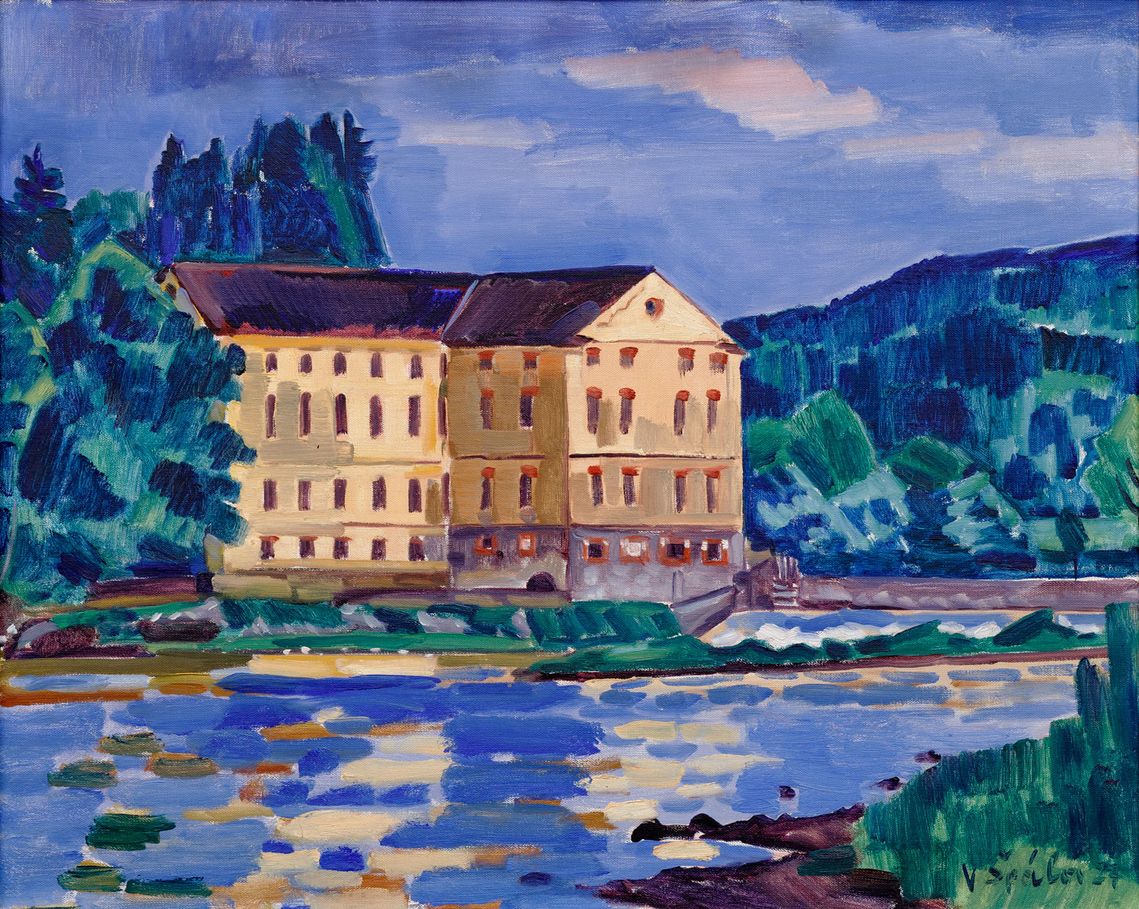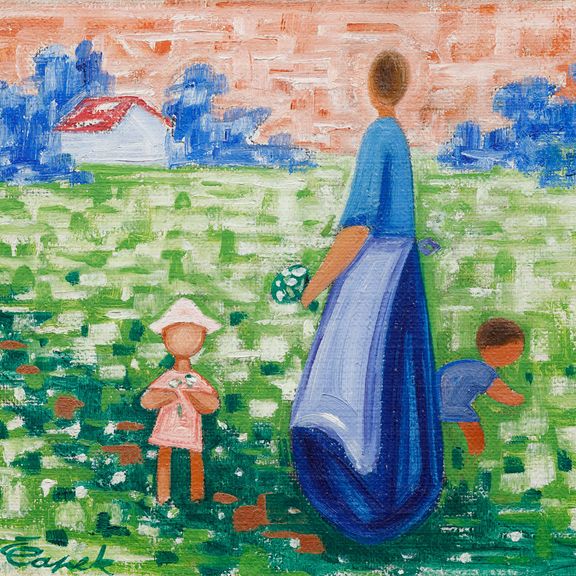
oil on canvas
1927
lower right
65 × 81 cm
frame
Starting price: 2,500,000 CZK Final price: 3,000,000 CZK
88th Auction, lot 187 Václav Špála executed this modern and dynamic landscape painting in 1927, when he fell in love with the landscape of South Bohemia where two of the most beautiful Czech rivers join near Písek. This region was attractive for many prominent artists of the time such as Adolf Hejduk, Fráňa Šrámek, a friend of Špála, August Sedláček, and Otakar Ševčík. However, Špála regularly returned to Písek mainly at the invitation of a local architect, Jiří Kodl, whom he met at meetings of SVU Mánes. At the same time, the second half of the 1920s was also a peak of Špála’s so-called blue period, today considered to be his best, foreshadowing his way of work for many years to come. On his paintings, he experimented with the use of cold blue, which became significant for his work in combination with warm shades of red. He executed the presented landscape brilliantly, acquainted with cubism and Cézanne’s careful application of precisely mixed colour shades. The ochre facade of Weil’s mill is in sharp contrast with the surrounding dark blue perhaps pre-storm landscape, as if lit by the sun setting behind the beholder. This impression is intensified by the reflection of the mill in the river in the foreground. Although Špála clearly distanced himself from cubism that dominated his work in previous years, he still adhered to a delicately expressive brushwork, compared to the similar painting Mill in Písek from the same year. The painting Weil’s Mill represents a completely unique work, rarely occurring on the art market, which undoubtedly proves that it was exactly the landscapes in which this artist found the maturity and depth of his very own artistic expression. It is listed in Špála’s inventory under No. 273. Assessed during consultations by prof. J. Zemina and PhDr. J. Machalický. From the attached expertise by PhDr. K. Srp, Ph.D.: „[…] In his work, this is an interesting motif related to the depiction of twilight, a natural phenomenon with which he dealt exceptionally, the light absorbed by the coming darkness. Between the water level, the forest with gentle hills, and the dramatic sky, already bringing a hint of darkness in the upper left part of the painting, there is a remarkable horizontal strip of a dam, leading to a green bank. Even though Špála had a great sense of the overall composition, he never lost his interest in depicting minor details, as also evidenced by this artwork. […]“







